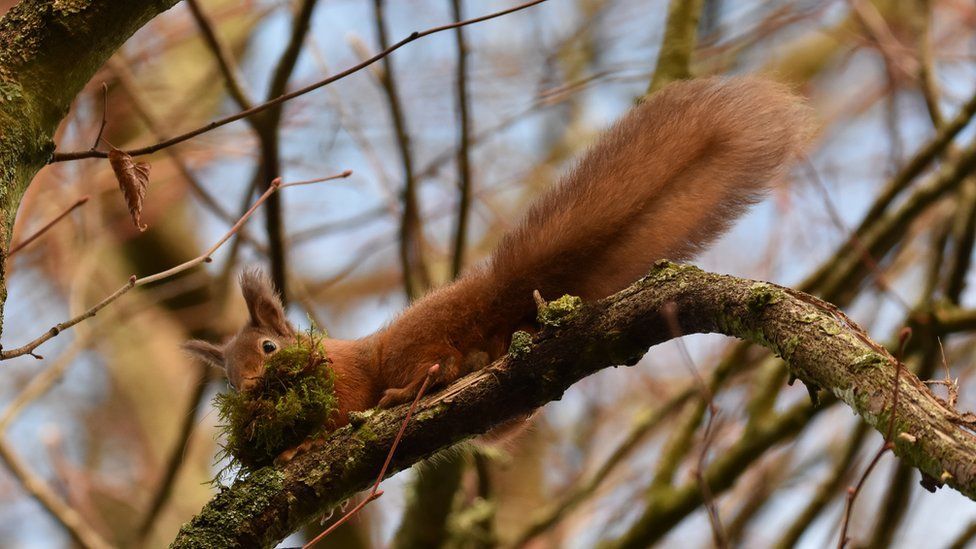NEW research shows that the planting of non-native conifers aimed at protecting the red squirrel population in Ireland and Britain is likely to have a damaging impact on the survival of the native species.
The research by Queen's University Belfast and the University of St Andrews shows that native predators in native woodlands are key to protecting the red squirrel.
This contradicts existing red squirrel conservation strategies that promote non-native conifer planting and it highlights the value native predators, such as pine martens, can deliver to native biodiversity.
Current conifer plantation-focused afforestation policies are sold as a nature-based solution for tackling climate change and the biodiversity crisis, particularly that of the threatened flagship species the red squirrel. This has now been contradicted by new research.
The universities, together with Ulster Wildlife and citizen scientists, used camera traps to survey over 700 sites across the North over a five-year period for red squirrels, grey squirrels and pine martens.
The results show that with the recovery of the pine marten, conifer plantations planted under the guise of protecting the red squirrel are likely to have a damaging impact.
The elusive pine marten is native to Ireland but had become extinct in most parts of the island by the 20th century due to hunting, loss of habitat and poisoning. However, the species' recovery has seen it return to more areas across Ireland, including the Belfast Hills.
Previous research had shown how the pine marten benefits the red squirrel by providing natural biological control of the invasive grey squirrel, which has replaced the red squirrel throughout much of Ireland and Britain.
STRATEGY: Pine Martens are key to the survival of the red squirrel in native woods
But it has now emerged that this effect is reversed in large non-native conifer plantations, where the pine marten reduces the occurrence of red squirrel. This could be due to the lack of alternate prey and the lack of refuges for red squirrels in highly simplified landscapes. But it's thought the main driver is that red squirrels thrive in new conifer woodlands while their grey cousin doesn't.
Dr. Joshua P. Twining, lead report author from Queen’s University Belfast, explained: “Restoration of native predators is a critical conservation tool to combat the on-going biodiversity crisis, but this must be in conjunction with maintenance and protection of natural, structurally complex habitats. This has global implications given the on-going recovery of predators in certain locations such as mainland Europe.
"It also shows that the current national red squirrel conservation strategies that favor non-native conifer plantations are likely to have the opposite impact to what is intended. Timber plantations are often promoted as being beneficial to red squirrel conservation, but our results show that they will have a detrimental effect on the species in the future.”
Dr Chris Sutherland from the University of St Andrews added: “This research demonstrates the enormous value of large-scale data collected through public participation. Combining this data with state-of-the-art analytical techniques has generated important conservation insights that until now have been overlooked.”
Ireland and the UK have some of the lowest forest cover in Europe – and what there is consists of over 75 per cent non-native timber plantations.
Dr Twining added: “This work shows that we need to develop an alternative national conservation strategy for the red squirrel, focused on planting native woodlands alongside continued pine marten recovery.”








